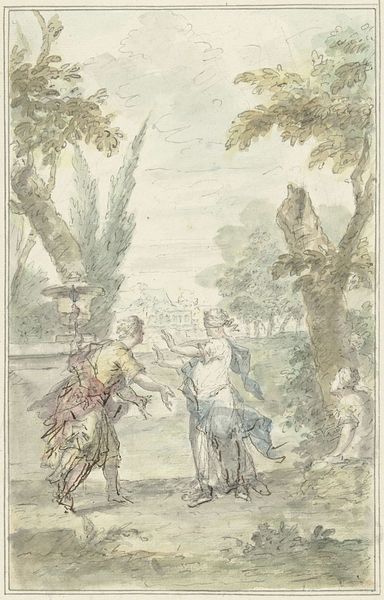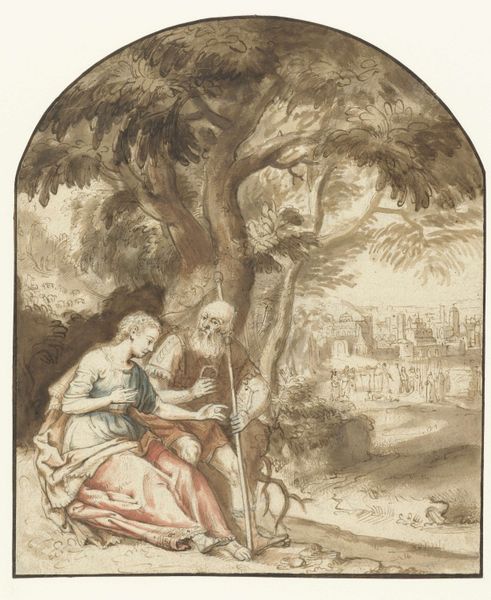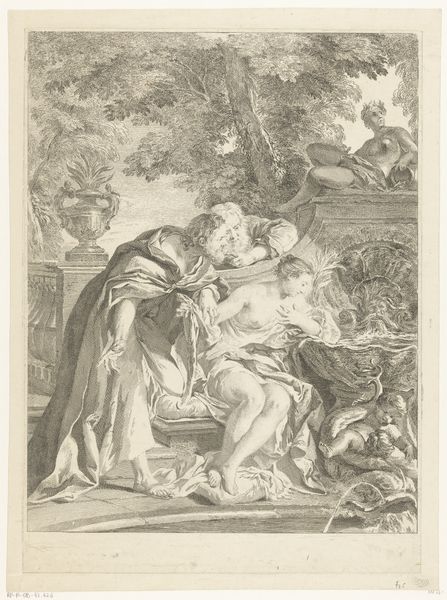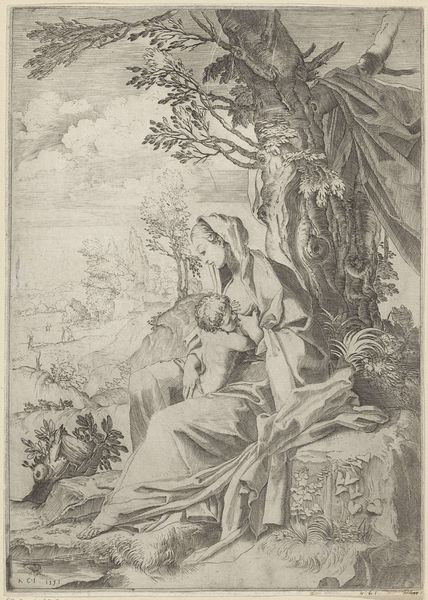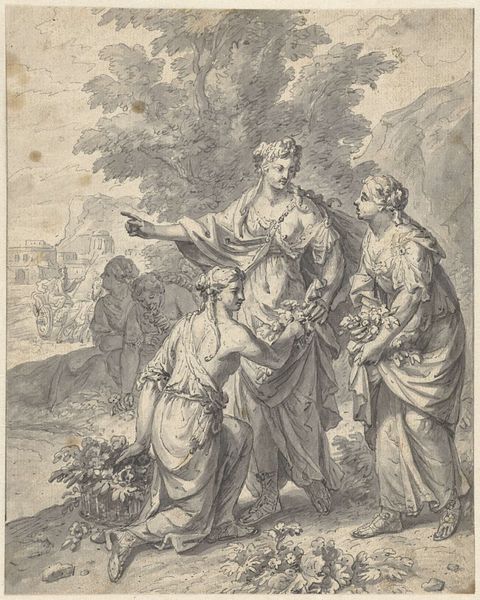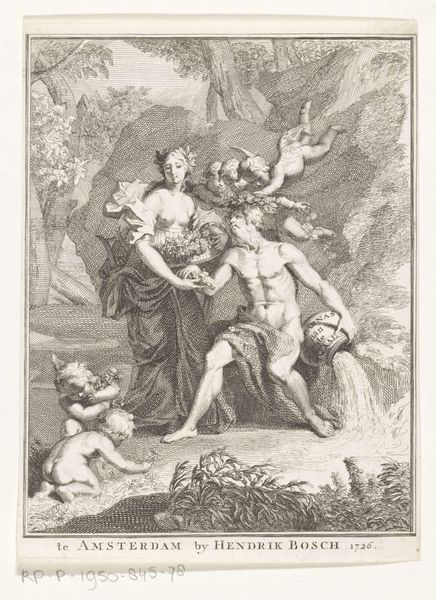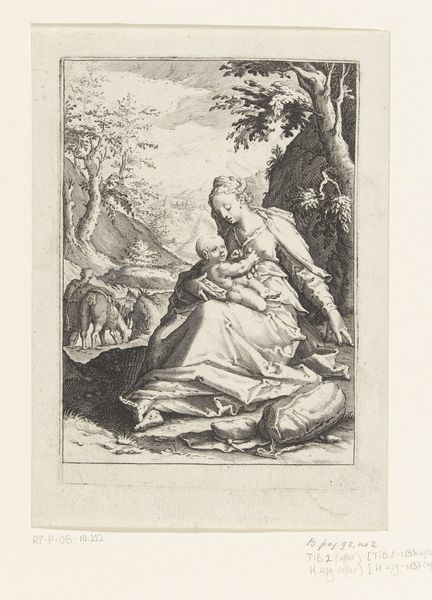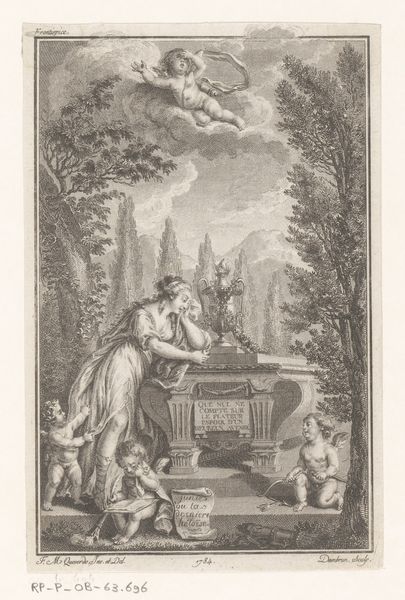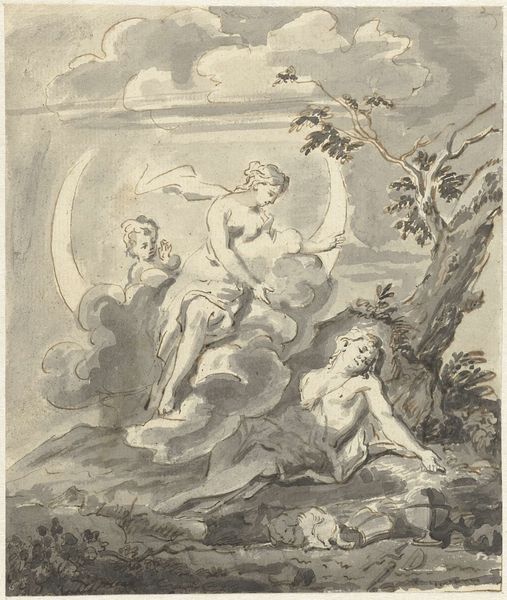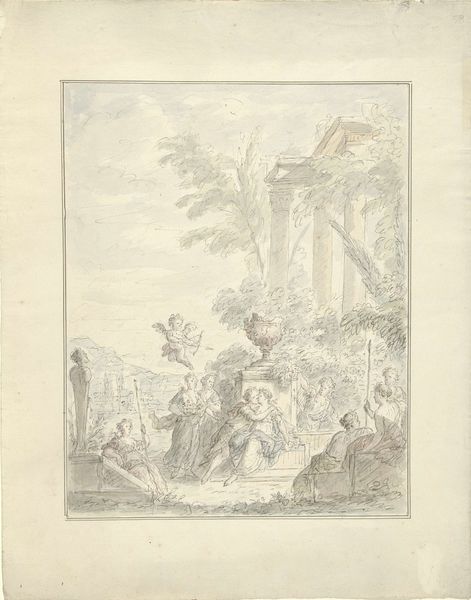
drawing, watercolor, pencil
#
drawing
#
pencil sketch
#
landscape
#
figuration
#
watercolor
#
pencil
#
watercolour illustration
#
history-painting
#
rococo
Dimensions: height 391 mm, width 252 mm
Copyright: Rijks Museum: Open Domain
Curator: This captivating piece, “Ontwerp voor een zaalstuk: Amaryllis kroont Myrtillo,” translating to "Design for a Hall Piece: Amaryllis Crowns Myrtillo," is attributed to Dionys van Nijmegen. It was created sometime between 1715 and 1798 using pencil and watercolor. Editor: Oh, it's just lovely. A bit faded, like a forgotten memory. The light almost feels…watery. You can practically hear the rustling leaves and feel the warmth on the figures sitting on that stone ledge. Is that a nymph crowning a shepherd, perhaps? Curator: Indeed! This artwork is rendered in the Rococo style. It is deeply entwined with themes of pastoral love and courtly romance which, when seen through a gendered lens, reflect the limited agency afforded women within those social structures. Myrtillo is being honored, literally crowned, for his beauty or accomplishments by Amaryllis. Editor: It definitely feels staged, doesn’t it? But there’s something touchingly vulnerable in Myrtillo's acceptance of the laurel crown. Maybe he doesn't fully buy into the theatricality of it all. I can relate! Curator: That vulnerability speaks volumes, positioning male beauty as something performative yet also powerful in its ability to garner social capital. How is this power different if he was being crowned by another man? How does it relate to power dynamics within same-sex relationships throughout history? What were the politics of public life in the artist's moment? Editor: It reminds me of these little performances that queer couples do, in private of course. You kind of need to in order to create intimacy with these tiny crowns for the other that is never seen by anyone else... And is that a Cupid peeking over the wall, overseeing it all? Curator: Yes! And notice how Cupid is incorporated into the broader context of history paintings and their role in legitimizing the aristocratic gaze, which reinforces these power structures. It speaks to a romantic ideal filtered through a hierarchical social structure, where even love becomes a tool of dominance and class division. Editor: That sounds about right, alas. Still, you can almost smell the earthiness mixed with perfume, can't you? Like a hidden world revealed through a crack in time... This really captures something special. Curator: Yes. Reflecting on van Nijmegen's creation allows us to confront both the beauty and the embedded power structures inherent in the art and society of that period. Editor: Beautiful, and wonderfully unsettling too, once you know all this. I'm off to ponder the hidden power dynamics in my own love life... Cheerio!
Comments
No comments
Be the first to comment and join the conversation on the ultimate creative platform.
